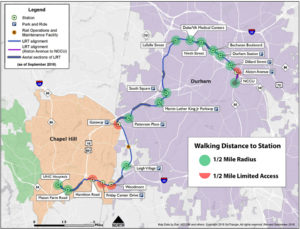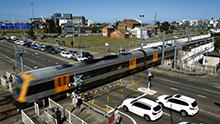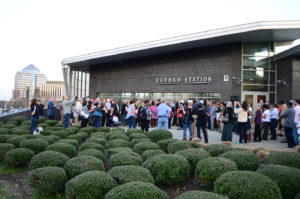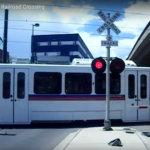Commonly Asked Questions: Just the Facts
 It is up to all of us to know where our tax money is going. We’ve compiled this list of Commonly Asked Questions with factual answers, including source, after finding out that an astonishing number of people knew little about this huge light rail infrastructure proposal. For more detailed information on whether the plan assumptions are accurate and how does this plan impact county budgets, neighborhoods, traffic, environment, and safety, go to the main home page here.
It is up to all of us to know where our tax money is going. We’ve compiled this list of Commonly Asked Questions with factual answers, including source, after finding out that an astonishing number of people knew little about this huge light rail infrastructure proposal. For more detailed information on whether the plan assumptions are accurate and how does this plan impact county budgets, neighborhoods, traffic, environment, and safety, go to the main home page here.
Since late February 2019, the DOLRT project has hit a number of obstacles. Go to the last question to see what are the hurdles that will make it difficult and unlikely this project can move forward.
1. Will the Durham Orange Light Rail (DOLRT) route carry me to the airport? Does this light rail go to RTP and Raleigh?
No, it will not go to the airport, RTP or Raleigh. The route runs from south of UNC Hospitals to NC Central in Durham. Because of the escalating cost of the light rail, the light rail will consume all of the ½ cent transit tax through 2060, no other spurs will be possible without large tax increases.
Source: GoTriangle https://gotriangle.org/lightrail/home
2. Will DOLRT reduce congestion?
Very little. The GoTriangle web site states: “…the project is not expected to have a significant effect on traffic on nearby roadways.” Traffic on 15-501 in Chapel Hill is projected to grow by at least 50% by 2030 due to the wave of coming development, including UNC Health Care, Wegman’s, Glenn Lennox, and Blue Hill. These developments cannot be served in any practical way by the light rail route, but could be served by a more flexible bus and BRT system. The Route 54 Congestion Study found that light rail reduced congestion by less than 1 % on Route 54 East.
Source: 2030 Town of Chapel Hill Mobility Study
3. Will DOLRT help protect the environment?
No. The GoTriangle Environmental Impact Statement (EIS) has no data or modeling to show that the light rail project will improve air quality. The EIS estimates that the light rail project will reduce Triangle transportation energy use by less than one tenth of one percent, an insignificant amount. The lack of reduction in energy use confirms the lack of any improvement in air quality. No energy use reduction, no positive effect on air quality or climate change.
Check out Environment page.
Source: GoTriangle Environmental Impact Statement
4. How long is the train ride from UNC Hospital to NCCU?
The Durham Orange light rail project is a 17.7-mile line that will connect NC Central, Duke University, UNC-Chapel Hill and UNC Health Care. Current estimated length to travel train end to end is 55 minutes.
Source: GoTriangle
5. How much does the project cost?
The total cost in 2017 was $3.3 billion and is moving upward toward $4 billion in 2019. The amount Durham and Orange County will pay has tripled. Durham alone will need to pay $1.5 billion according to 2017 numbers. Our estimated cost per mile is $186 Million per mile (using $3.3 current project cost and 17.7 mile route). With all the costs of redesign of the route in downtown Durham and Duke Hospital, including a tunnel and various elevated track areas, costs are expected to be significantly higher than the current estimate.
6. Why did GoTriangle put the ROMF railyard in a residential area near wetlands?
There was a zoning hearing at the Durham City Planning Commission and the Commission did not approve the zoning application because of proximity to homes and schools. A number of neighborhoods in both Orange and Durham County objected but Durham City disregarded them and approved the rezoning to an industrial use. See details here.
7. What do we know about Duke’s objections to the rail route?
EMI interference is one of several serious problems that Duke has raised WRT DOLRT.GoTriangle received a letter describing the reasons for not signing a cooperative agreement.
For Seattle’s light rail, they mitigated EMI interference by relocating the equipment to a new building for $53 million of which the LRT project paid $43 million. In Minnesota, the university spent $25 million to relocate the equipment but still had problems. Here is what happened in Minnesota. The Seattle mitigation plan was developed in 2007, nine years prior to LRT construction
8. How many stations will be located in Chapel Hill?
There are four stops in Chapel Hill, three of these stops are on UNC University property. The light rail does not extend to downtown Chapel Hill or Carrboro.
- Orange County? Four stops, all in Chapel Hill
- Durham County? Fourteen stops
9. How do I travel to a station?
According to GoTriangle estimates, 80% of the trips used to access a light rail station will be made by automobile, adding many trips to already crowded highways, including Gateway and Friday Center stations and other Orange County stops. The Friday Center stop is currently served by bus line to UNC Hospital that runs every 15 to 20 minutes. Ideally, the rail would be served by frequent buses. Funds for additional bus service compete will compete with light rail funds.
Source: TOD Guidebook
10. Where do I park if I want to ride?
GoTriangle plans up to now have not included the major expense of building parking facilities at the station stops. Parking lots are planned for the Gateway station that is located in Durham on the border to Chapel Hill, and Leigh Village. Parking will be limited at other Orange County stations.
11. Will DOLRT really attract 8 million passengers a year?
An expert economist does not think this ridership estimate is achievable. He says the smallest city that reports light rail ridership is Buffalo, NY with a much larger population of 940,000 and 4.7 million riders. Buffalo is three times larger than Durham/Chapel Hill, but still generates only 58% of the number of riders GoTriangle predicts for Durham/Chapel Hill. The GoTriangle estimates appear to be wildly optimistic.
Source: Economist Lutz Hendrichs, Notes on ridership
12. What happens if ridership does not meet projections?
If ridership projections are not met, that could cause a yearly operating loss that would likely be covered by local taxpayers. Orange County will be responsible for 20% of the operating costs of the Light Rail and Durham County is responsible for 80%.
13. When will the light rail be finished? How long will construction impact traffic?
GoTriangle says that light rail will be finished in 2029. We can expect big expenditures but no service for a decade. Assuming funding goals are met, construction will go on for the next decade along the route and at the station stops.
Source: GoTriangle
14. Won’t DOLRT spur economic development?
Not in Chapel Hill. Three of the stops are on land owned by UNC. Only Gateway offers some economic development potential, but most of the area is located in Durham County, and the portion on the north-west side of 15-501 is owned by UNC Health, not required to pay taxes.
Some projects have already been permitted and built along the portion of the rail line in Durham County, which is better suited for economic development in downtown Durham.
15. Will DOLRT encourage affordable housing?
No, it will cause land values to rise and gentrification will reduce the stock of affordable housing. A GoTriangle consultant acknowledged to the Chapel Hill Town Council that public investment would be required to build affordable housing.
The conclusion in the EIS says: “Gentrification, and more specifically a reduction in affordable housing, is a potential effect of the project because of likely upward pressure on land values and commercial rents that may occur in station areas.”
Light rail will create a powerful economic force that threatens affordable housing near the project route. To even partially overcome this force and assure some availability of affordable housing will take strong, sustained, and expensive local government action.
Source: Environmental Impact Statement, GoTriangle
16. Are light rail systems successful in other parts of the country?
Light rail projects all across the country are struggling to maintain riders. Some of the most successful projects, such as Seattle Light Rail, carry passengers travel from an international airport to other densely populated areas of the city. This is in contrast to the DOLRT project which while connecting 3 universities, takes passengers through sparsely populated areas, with miles of wetlands, to a final stop south of UNC Hospitals, a long distance from downtown Chapel Hill. The train will not connect to RDU Airport, RTP or Raleigh.
17. What other choices do we have other than light rail?
Bus Rapid Transit: Instead of the extensive, inflexible rail line AT LEAST 12 years away, we can build a Bus Rapid Transit system in a few years to serve many more people efficiently and economically.
We can follow the example of our much more urban and populous neighbor, Wake County. Wake determined that light rail was not the best transit solution. They have planned a system based on bus, bus rapid transit, and commuter rail to serve more people more cost effectively. And sooner! Wake is making rapid progress getting their system built while we will be waiting for light rail for ten years.
18. How will DOLRT affect Orange County finances?
DOLRT presents an open ended financial threat to Orange County finances. Depending on the new Financial Plan to be presented in a few weeks, the new financial plan could endanger reserves or funds that would normally be used for schools or essential services. The biggest danger is posed by the long term debt structured to pay for a rusting white elephant lasting until 2062 or longer. Kids in first grade now will have their drivers’ license before they can take a ride on the light rail.
Orange County has at this point determined not to contribute any more money than committed in 2017, $149.5 million. Durham County is facing big cost increases to keep the project alive as the design is changed to try to resolve objections. So far they are in for $1.2 billion. We can anticipate further cost escalation as the new tunnel and other features are engineered and as unforeseen construction difficulties arise. These factors can cause light rail costs to increase beyond the income from the half cent sales tax and could threaten county budgets for schools, social services, and other purposes.
19. What can residents of Orange and Durham Counties do now?
At every critical stage so far, a majority of elected members on each Board of the Orange County Commission and the Durham County Commission have supported the Durham Orange Light Rail project. Objections to the cost and questions about the relevance of the project have so far fallen on deaf ears of a many Board members. The most important fact to know is that the portion of the project cost paid for for both Durham and Orange has quadrupled and that our local counties will make up the financial gap as costs go up. To prevent putting funding for schools and essential services at risk, we are asking you to tell the Commissioners to stop funding this project and not to assume any more debt.
20. What are the factors that could prevent this project from moving forward?
- Unable to cover additional costs including contingency requirement of 10% of project costs;
- NC Railroad may or may not sign cooperative agreement;
- Duke won’t agree to route through Duke campus and hospitals;
- Local share of cost has more than tripled. Will Durham agree to up to 500 million in extra costs; will Orange County stick to 149.5 million cap without taking on additional interest?;
- GoTriangle must meet state-imposed deadline of April 30 to have all local funding in place, including private donorw;
- Will Fed funds come through?
- How will pending lawsuit affect application?











Follow Us